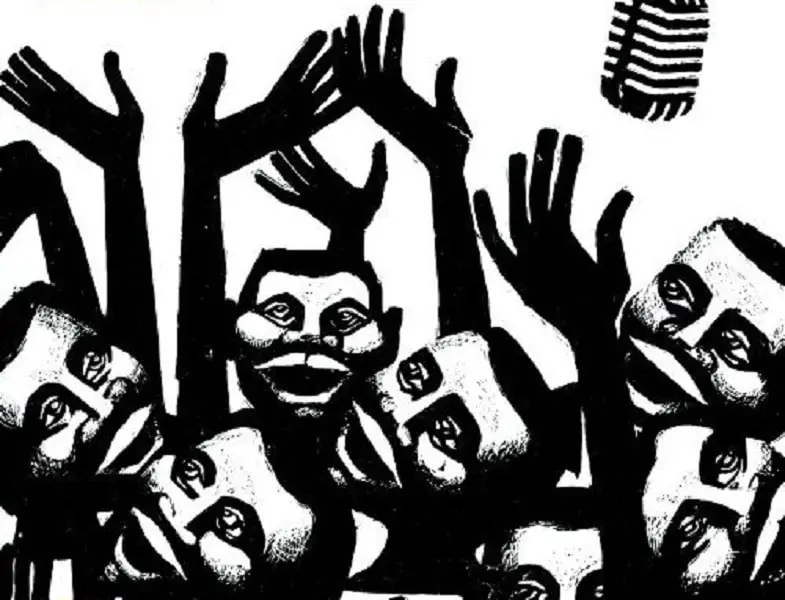[dropcap]I[/dropcap]t is now exactly sixty years since jazz legend Yusef Lateef came up with his iconic album Other Sounds. Going beyond something that was considered as traditional, or at that time, modern jazz (bop), Lateef started incorporating eastern world sound into his music. A sound he then fully incorporated into his widely regarded classic, Eastern Sounds, in 1961. At the time, this seemed just like a curious musical experiment, many critics thought would not expand past relative obscurity.
Sixties: The Overall Expanding of Horizons and the Advent of Spiritual Jazz
But the political, social, and in that respect, musical developments in the ’60s helped spiritual jazz become more than just a figment of imagination of a few open-minded jazz musicians. The general political turmoil, the Vietnam war, and specifically, the fight for civil rights reached its peak in the ’60s, particularly with the Watts (1965) and Detroit (1968) riots, assassination of Dr. Martin Luther King (1968), creating a political and social atmosphere that sprung the search for more – encompassing political, social, religious, but also musical ideas.
The general political turmoil, the Vietnam war, and specifically, the fight for civil rights reached its peak in the ’60s…creating a political and social atmosphere that sprung the search for more – encompassing political, social, religious, but also musical ideas.
This did not only include the influences of the then still relatively new form of rock and roll, but also the ‘older’ jazz. One of the responses of jazz musicians was the inclusion of all elements that could be considered ‘divine’, from Eastern religions and philosophies, to space origins and explorations. The idea seemed to be to make the concept of ‘divine’, universal, all-encompassing and with respect, all-equal.
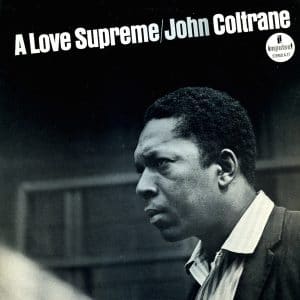
The key spark in creating the spiritual jazz genre, and for the coming decade, even a movement, was John Coltrane’s seminal A Love Supreme album – easily one of the best musical works of all time. A Love Supreme combined the idea of the all-encompassing ‘divine’, picked up on (in very broad terms) the musical threads placed by Lateef, and sprinkled in some components of folk. The album was practically recorded in a span of two days in 1964 (it was released in early 1965) and sounded like it was genuinely inspired by ‘divine intervention.’
A Love Supreme combined the idea of the all-encompassing ‘divine’, picked up on (in very broad terms) the musical threads placed by Lateef, and sprinkled in some components of folk…sounded like it was genuinely inspired by ‘divine intervention.’
The ball started rolling quickly and quite a few musicians produced works of inspired brilliance that picked up on the idea of spiritual involvement in music which also presumed not only avant-garde ideas, but the incorporation of all possible sounds that could signify the universal character of the music these musicians were coming up with. The work of saxophonist Albert Ayler particularly his album, Spiritual Unity from 1964 (actually preceding Coltrane’s A Love Supreme), and his later body of work until his premature death. Coltrane’s collaborators – saxophonist Pharaoh Sanders and his wife, harpist Alice Coltrane. Herman Poole Blunt, better known as Sun Ra, the man who introduced the concept of space as a spiritual element. Ever experimenting Art Ensemble of Chicago and countless others brought that ever-expanding well of musical ideas to prominence, making it at the time, the strongest musical force in jazz.
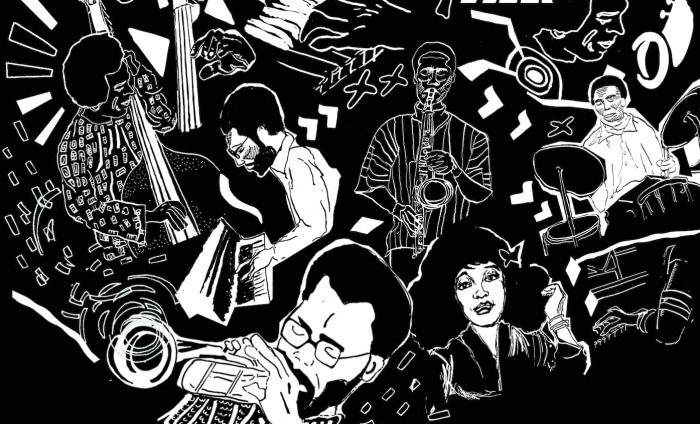
The Changes in Musical Tides, Its Effects On Spiritual Jazz, and Its Subsequent Resurrection
At one point practically every prominent jazz musician touched with the spiritual jazz base, whether it was Miles Davis with his late-’60s/early-’70s exploratory works starting with In A Silent Way, through Charles Lloyd, Archie Shepp, or their ’70s collaborators like Lonnie ‘Liston’ Smith – who connected to Miles’ electronic and Sun Ra’s space explorations. The peak of spiritual jazz popularity was in the first part of the ’70s with jazz labels like Strata-East and Muse devoting almost its entire (former) or big chunks of their catalogs to the genre. But then, being in a way tied to the social and cultural situation at the time, the genre seemed to be on the wane, partly gentrified and diluted, being often pushed under that big fat carpet labeled as ‘world music.’
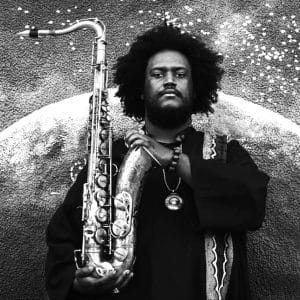
After, years, even decades on the back burner, somewhere in the shadows of musical trends, including jazz itself, it was the appearance of sax player and composer Kamasi Washington and his second album proper Epic (his first album Area J is still regarded as somewhat of an obscurity) that spiritual jazz seemed to be again knocking at the front door of musical genres, this time around supported by a quite numerous new force. Not excluding the fact that along with the new emerging musicians some old forces began to regain their prominence. Some, like Pharaoh Sanders, who’s still a force to be reckoned with live, are having their previous brilliant works re-issued, while some musicians that were not well known the first time around like Brother Ah are getting their well deserved recognition.
…the appearance of sax player and composer Kamasi Washington and his second album proper Epic…that spiritual jazz seemed to be again knocking at the front door of musical genres, this time around supported by a quite numerous new force.
But, with Kamasi Washington breaking the ice, it is this new group of musicians, spanning some names even outside of the US that are leading this resurrection. Washington’s Epic, really being an epic, not solely by its three CD/five LP size, but the span of its music reach from Clade Debussy, to Coltrane, to hip-hop, it turned out to be a groundbreaking album in every respect. But it was actually the follow-up Harmony of Difference, that really fully fits in the category of spiritual jazz, not only by its musical elements, but also with the multimedia context it was prepared for (a film and an art exhibition) and the message that is not only contained in the title it tries to send. But the momentum was pushed even further by the appearance of even more prominent musicians that not only easily fit the genre, but also further stretched its boundaries.
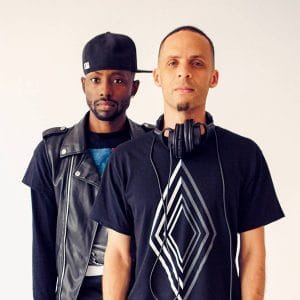
The list can start anywhere. Form sax player James Brandon Lewis, and his exhilarating live performances and a series of albums, where his latest two, Days of Freeman and No Filter, contain a combination of free jazz, hip-hop, and gospel with song titles like “Wading Child in Motherless Water” that truly shine. Then in line comes the drummer Jaimeo Brown and his musical collective Transcedence, where across his two albums (Transcedence and Work Song) he combines everything from Coltrane, blues, work songs, Indian and Chinese music, and actually makes sense of it all. One of the names that participated in both of Brown’s projects is another sax player, JD Allen. Allen has been around for a while but it was his more recent releases, along with the collaborations with Brown like his album, Americana, Musings on Jazz and Blues, that really started to encompass wider musical elements, stretching out of the boundaries of ’strict’ jazz.
…the momentum was pushed even further by the appearance of even more prominent musicians that not only easily fit the genre, but also further stretched its boundaries.
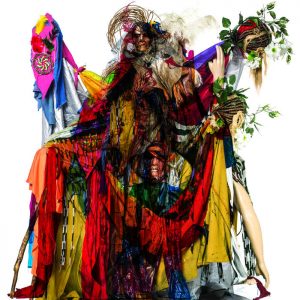
But what is also interesting is that it seems that spiritual jazz, which started out with the intention to stretch the social, spiritual, and musical borders, is currently transcending the physical borders too. The genre has come up with spiritual jazz names in Britain, like the drum and sax duo Binker and Moses (their recent album Intoxication From The Jahvmonishi Leaves being the case in point) and yet another British duo, Hampshire and Foat with their Sun Ra and Lonnie ‘Lists’ Smith-like space jazz. Then there are Brazilian all-genre spanning groups like Nomade Orquestra and Bixiga 70 covering everything from their homeland rhythms to Middle East and Carlos Santana (who had a few albums himself within the genre in the ’70s). And the particularly interesting Italian collective Southbound lead by the drummer Tiziano Tononi, whose recent Trouble No More… All Men Are Brothers, actually looks at the music of The Allman Brothers Band through the eyes (ears) of spiritual jazz.
At its inception, spiritual jazz was a sign of the political/social/cultural times, is its resurgence another cry out in search of more during these turbulent times?

